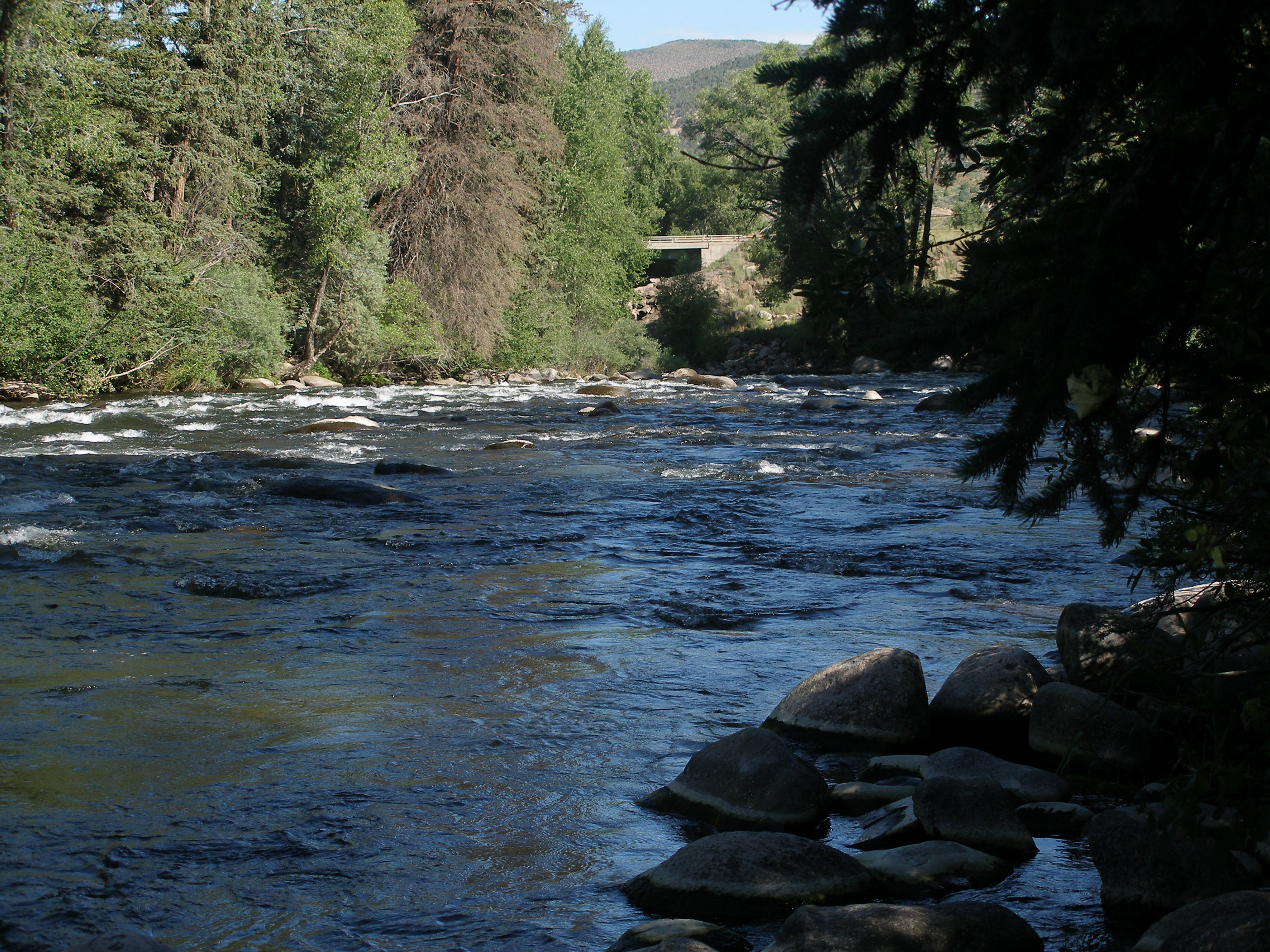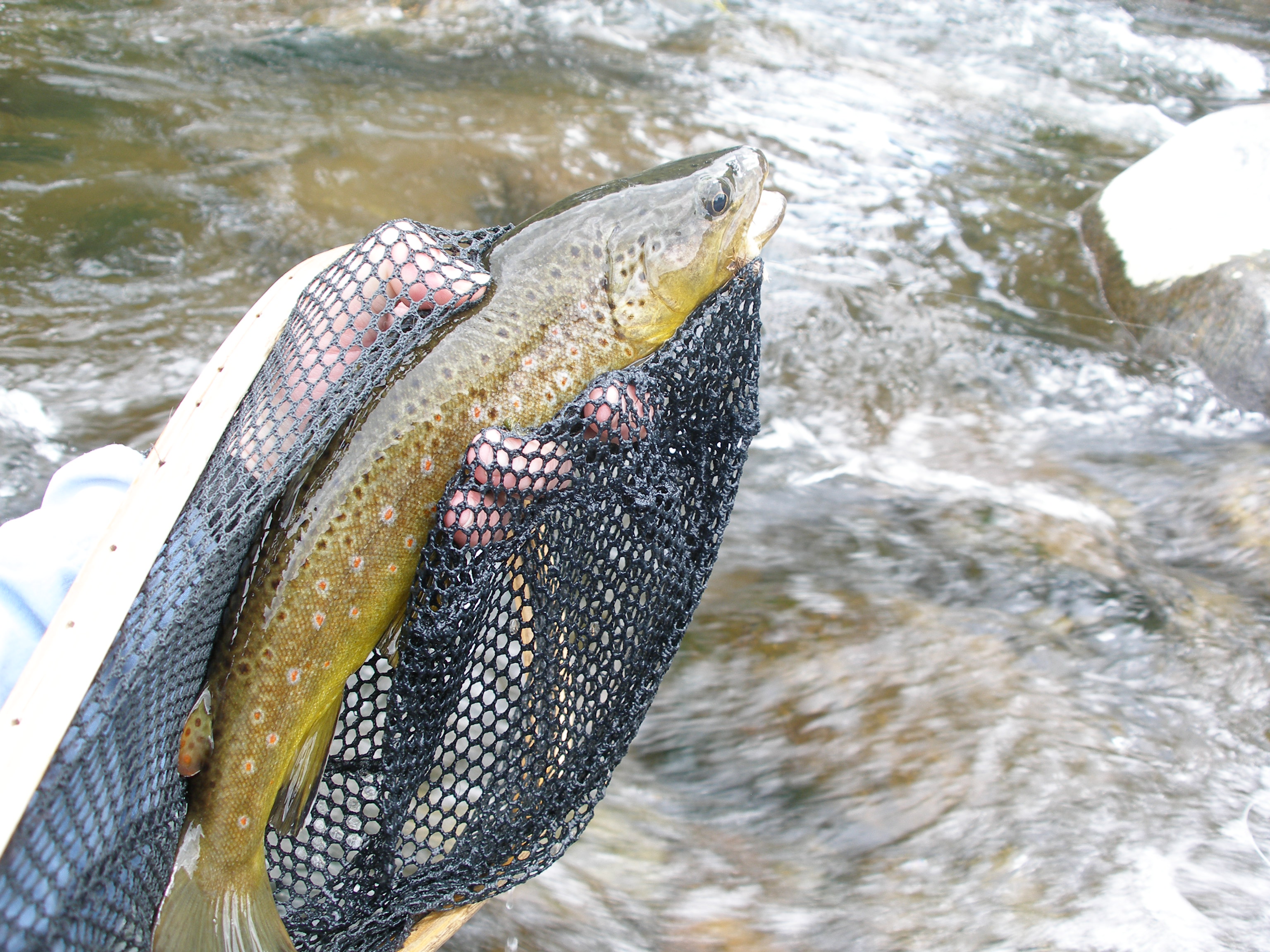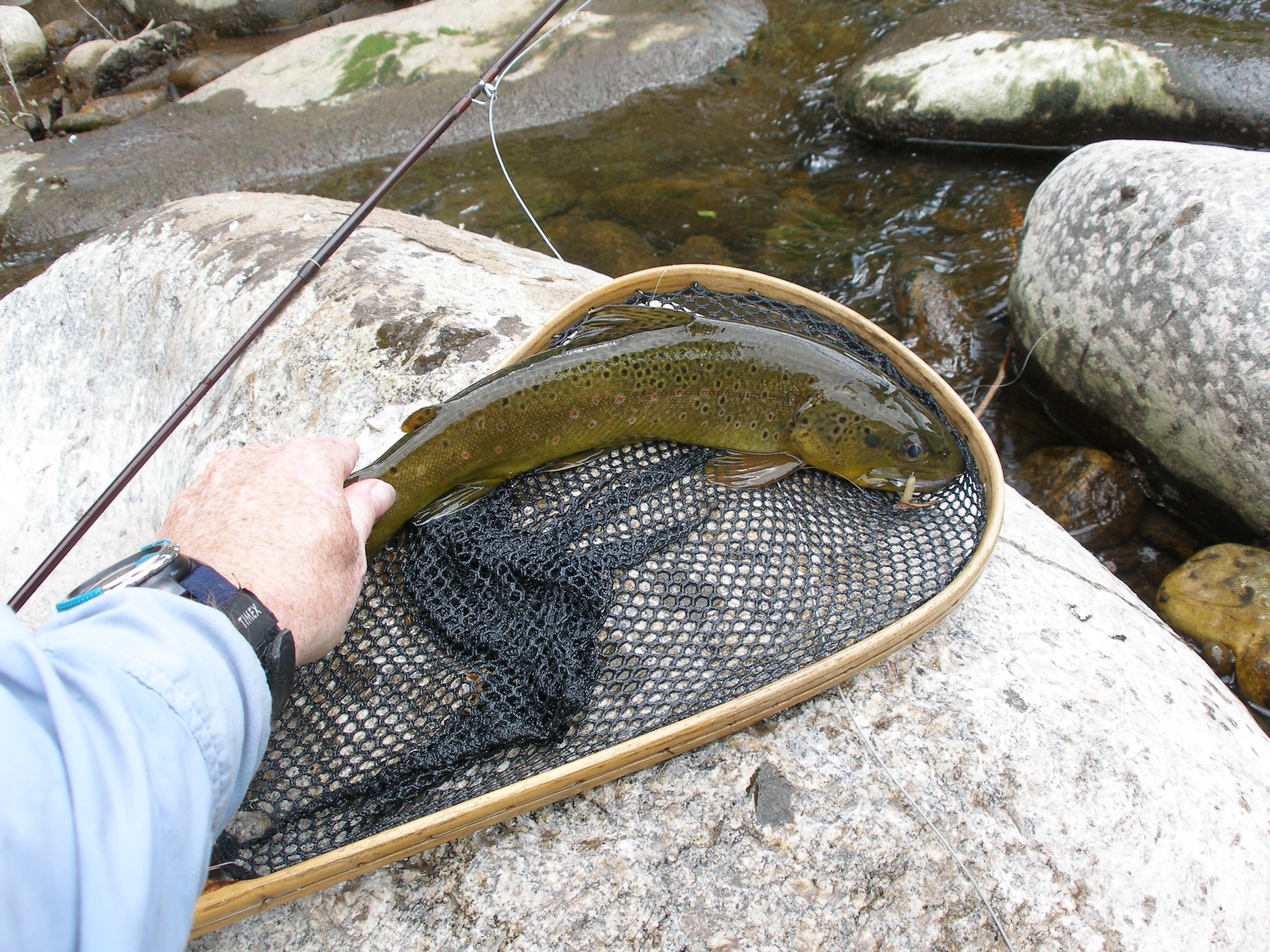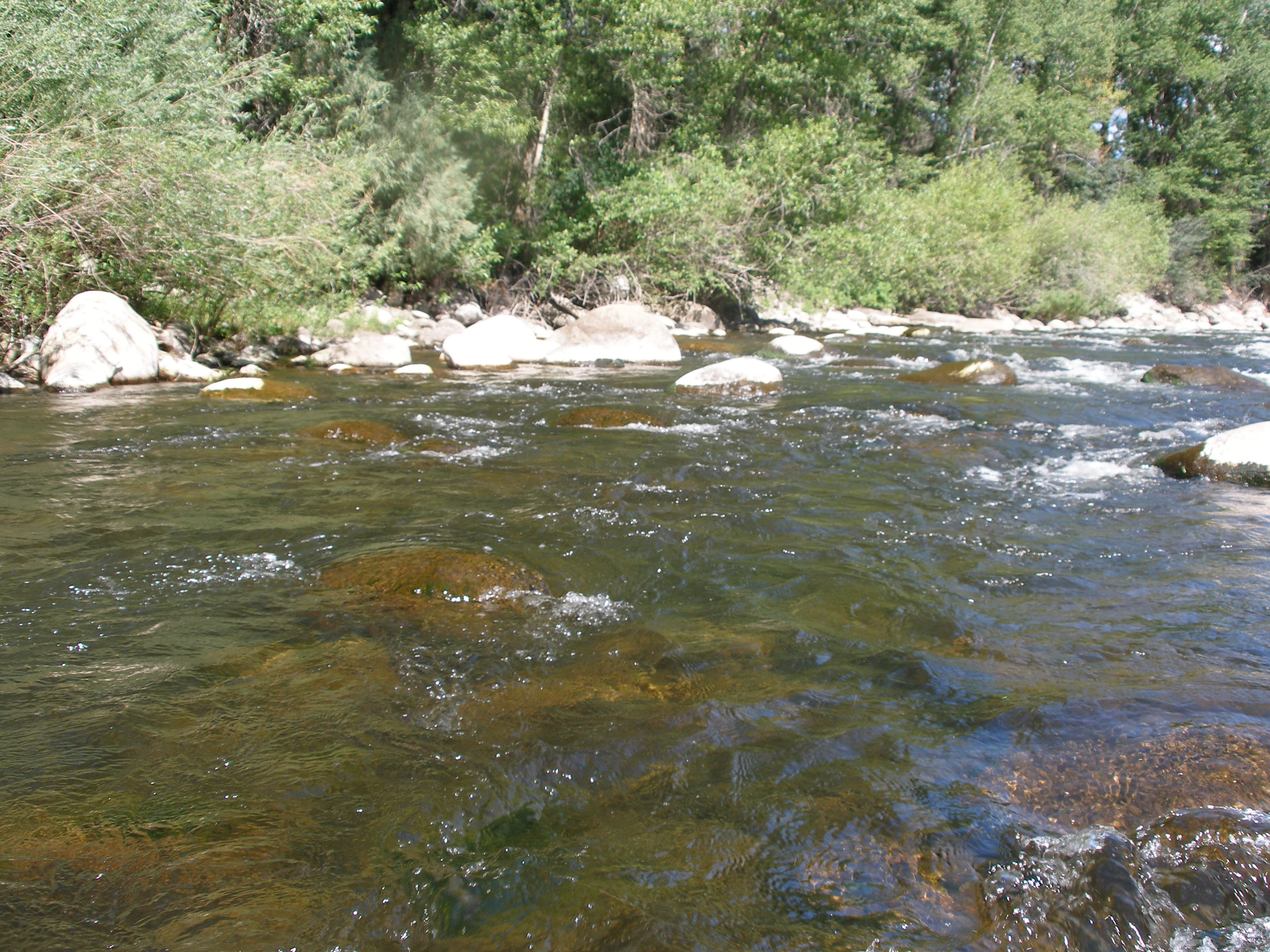Time: 10:00AM – 5:00PM
Location: Edwards Rest Area
Eagle River 07/12/2006 Photo Album
At the last minute I decided to use a vacation day in the midst of budget preparation at work to make a trip to the Eagle River. I committed to driving to Santa Fe over the weekend and was, therefore, locked out of fishing during that time frame. I read that flows dropped to 514 cfs. From historical experience I knew that when flows drop after snow melt, the Eagle can be a hot fishery.
I arrived at the Edwards rest area around 9:45AM, and by the time I put on my waders and strung my line, it was 10AM. I walked across the road and worked my way along the north shoreline for quite a distance, before I started. I tied on a light yellow Letort hopper with a beadhead pheasant tail dropper. I was not seeing much action, so I switched out the dropper for a bright green beadhead caddis pupa. Still no takes resulted, and I noticed quite few small caddis flitting about, so I changed to a smaller beadhead emerald caddis pupa. This worked, and I caught a nice brown on the emerald caddis and then two beautiful brown trout on the hopper. The flows were strong but clear, and the fish were hugging submerged rocks at the tails of pockets and slots. I caught one more brown before lunch on the caddis pupa. All the browns were in the 13-16 inch range, and this would prove to be the case for the remainder of the day except for four or five in the ten to twelve inch range.
After lunch I hiked back down to the bridge and began fishing upstream from there along the north bank. My fishing was confined to the ten feet of water next to the bank except for a stretch directly across from the rest area parking area, where the river widened, and the flow dispersed over a broader area. I picked up another four trout tight to the bank upstream from the bridge on the emerald caddis after lunch. When I reached an area above where a small side brook entered, I experienced a refusal at the tail of the run on the hopper. I moved farther out in the current to cover some mid-stream pockets; and when I was above the run where I witnessed the refusal, I saw the fish rise to a natural. There were small mayflies emerging at this point in time, so I tied on a parachute pale morning dun. The fish gave this fly a look but did not eat it, so I next tried a CDC olive. On about the fourth drift the fish rose and inhaled the olive, and this success was very rewarding.
Next I began spotting green drakes, as they took flight quite sporadically. A western green drake is a large lumbering mayfly on the water that does not typically go unnoticed by trout. I knotted a green drake cripple to my leader and worked the water thoroughly for an hour with this imitation. This change in approach yielded two smaller browns close to shore.
I did no see many mayflies emerging after 3PM, so I tied on a large attractor fly that I made from the Scott Sanchez book (peacock and red floss body with white calftail wing) and a beadhead pheasant tail dropper. I was now above the long pool with a nice run entering upstream of the rest area. The area above the long pool is characterized by thirty yards of pocket water. The Sanchez convertible combined with the pheasant tail proved to be very effective. I landed four or five very nice browns, as most consumed the beadhead pheasant tail, but one or two crushed the large attractor. After landing the four or five fish, I connected with perhaps the largest brown of the day. I know this, because it jumped out of the water and broke off both flies. I did not have any more of the large attractors in my front pack, and did not want to pause to search my backpack, so I tied on a royal stimulator fly with a peacock and red body. I added the beadhead pheasant tail dropper and landed another four trout. Two chomped the nymph and two smacked the royal stimulator. All the fish caught in the pocket stretch after 3PM were beautiful specimens in the fourteen to seventeen inch range.
Fish Landed: 20




